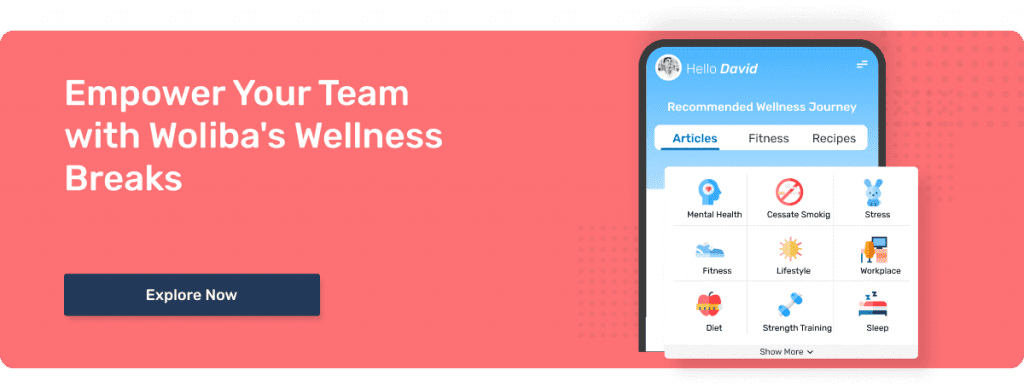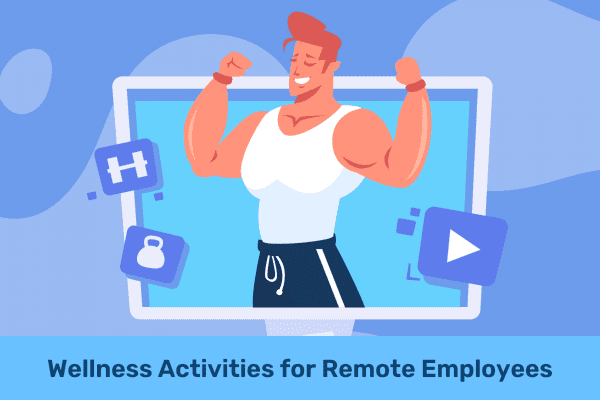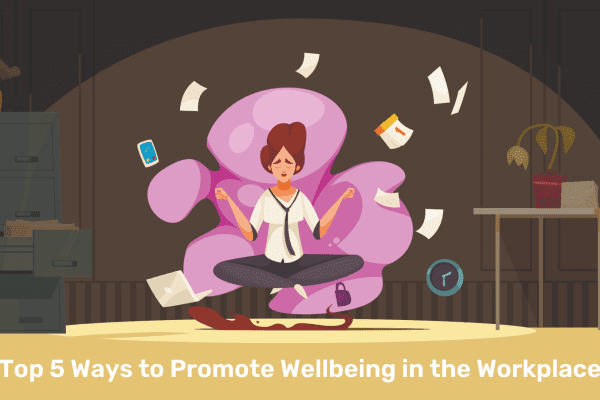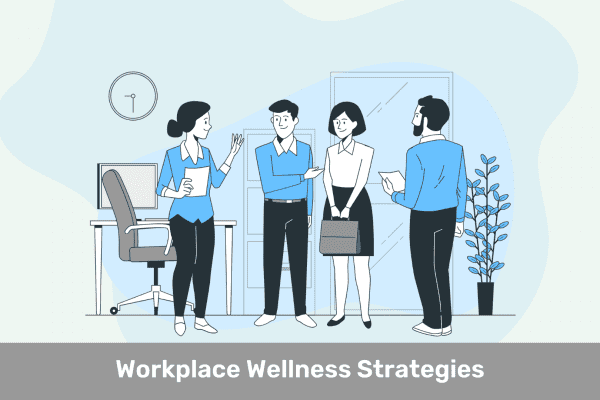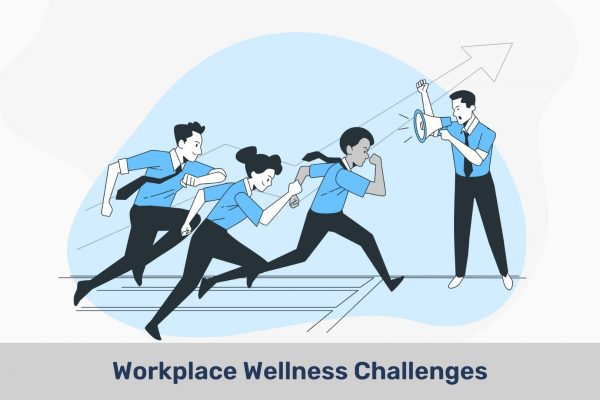Introduction
Have you ever wondered how incorporating wellness activities into your daily routine could transform your life, especially as a busy working adult? In today’s fast-paced world, where deadlines loom large and responsibilities seem never-ending, taking care of our physical, mental, and emotional health often takes a back seat.
But here’s the thing, prioritizing wellness activities isn’t just about indulging in occasional self-care rituals; it’s about nurturing a lifestyle that gives resilience, productivity, and inner peace amidst the chaos of everyday life.
Let’s start by shedding some light on why wellness activities are vital, especially for working individuals like you.
Did you know that according to recent studies, nearly 83% of working adults in the U.S. report feeling stressed about their jobs.
Engaging in regular physical activities has been shown to be a powerful antidote to workplace stress.
But wellness activities aren’t just about physical health – they’re equally essential for nurturing your mental and emotional well-being.
Did you know that practicing mindfulness meditation for as little as 10 minutes a day can reduce symptoms of anxiety and depression by up to 40%.
Taking a few moments to pause, breathe, and connect with the present moment can work wonders for your mental clarity and overall outlook on life.
And let’s not forget about the importance of social wellness. In today’s hyper-connected world, building meaningful connections is more crucial than ever. Engaging in social wellness activities like joining a community sports team, attending a book club, or simply catching up with friends over a cup of coffee can provide much-needed social support and nourish your soul.
Let’s delve deeper into the daily activities for adults focusing on self-care.
Negative Effects of Lack of Wellness in Adults
-
- Increased risk of chronic diseases such as heart disease, diabetes, and obesity.
- Elevated stress levels leading to burnout and decreased productivity.
- Poor mental health outcomes including anxiety, depression, and mood disorders.
- Reduced energy levels and overall fatigue.
- Impaired cognitive function and decreased focus.
- Weakened immune system and susceptibility to illness.
- Hindered ability to cope with everyday challenges and setbacks.
- Decline in physical mobility and flexibility.
- Lack of social connections and feelings of isolation.
- Overall diminished quality of life and well-being.
What is a Wellness Activity?
A wellness activity is any intentional and purposeful action taken to promote physical, mental, emotional, or social well-being. These activities are aimed at enhancing overall health and quality of life by addressing various aspects of wellness such as nutrition, exercise, stress management, mindfulness, social connections, and self-care.
Importance of Wellness Activities for Working Adults
Wellness activities are crucial for working adults because they offer a means to manage the multiple demands and stresses of professional life while simultaneously nurturing physical, mental, and emotional well-being.
- The demands of the workplace can lead to high levels of stress, which, if left unmanaged, can negatively impact both physical and mental health. Engaging in wellness activities such as exercise, mindfulness, and relaxation techniques can help reduce stress levels and give a sense of calm and balance.
- Sedentary office jobs and long hours of sitting can take a toll on physical health. Wellness activities help working adults maintain optimal physical health, reducing the risk of chronic diseases and improving overall energy levels.
- The pressures of work, deadlines, and long hours can contribute to mental health issues such as anxiety and depression. Mindfulness meditation, journaling, and seeking support through therapy or counseling can enhance mental resilience, improve mood, and give a positive outlook.
- Taking regular breaks for wellness activities can actually boost productivity in the long run. By managing stress levels, improving focus, and enhancing overall well-being, working adults can approach tasks with renewed energy and concentration, leading to increased efficiency and effectiveness in the workplace.
- Balancing work responsibilities with personal life can be challenging, but prioritizing wellness activities helps create a sense of equilibrium. By dedicating time to self-care, hobbies, and social connections outside of work, working adults can maintain a healthier work-life balance, leading to greater satisfaction and fulfillment in both domains.
- Wellness activities help build resilience, enabling working adults to bounce back from setbacks and challenges more effectively. By developing coping strategies, practicing self-care, and cultivating supportive relationships, individuals can navigate workplace stressors with greater ease and adaptability.
7 Days, 7 Wellness Activities for Adults
Day 1: Mindful Gardening

Mindful gardening is a practice that combines the principles of mindfulness with the act of gardening. It involves cultivating awareness and attention in the present moment while engaging in various gardening activities, such as planting, watering, weeding, and harvesting. This approach encourages individuals to connect with the natural world, appreciate the beauty of their surroundings, and cultivate a deeper sense of presence and peace.
At its core, mindful gardening emphasizes being fully present and engaged in the gardening process, rather than being consumed by thoughts about the past or future. It involves tuning into the sensory experience of gardening, such as feeling the texture of soil, observing the colors and shapes of plants, and listening to the sounds of nature.
Practicing mindful gardening can have numerous benefits for individuals’ mental, emotional, and physical well-being:
-
- Mindful gardening provides a therapeutic escape from the stresses of daily life. By focusing attention on the present moment and engaging in gentle physical activity outdoors, individuals can experience a sense of relaxation and calm.
-
- Gardening mindfully allows individuals to clear their minds of clutter and distractions, promoting mental clarity and focus. This can enhance problem-solving skills and creative thinking.
-
- Engaging in mindful gardening fosters a deeper connection to the natural world. By immersing oneself in the rhythms of the seasons and observing the cycles of growth and decay, individuals can develop a greater appreciation for the interconnectedness of all living things.
-
- Gardening has been shown to have mood-boosting effects, and combining it with mindfulness amplifies these benefits. Mindful gardening encourages individuals to cultivate a positive attitude, gratitude, and a sense of wonder and awe for the beauty of nature.
Day 2: Laughter Yoga

Laughter Yoga is a unique wellness activity that combines laughter exercises with yoga breathing techniques to promote physical, mental, and emotional well-being. Founded by Dr. Madan Kataria in 1995, Laughter Yoga has gained popularity worldwide as a fun and effective way to reduce stress, boost mood, and improve overall health.
During a Laughter Yoga session, participants engage in a series of playful and laughter-inducing exercises, often accompanied by rhythmic clapping and chanting. These exercises are designed to simulate genuine laughter, even in the absence of humor or jokes, by incorporating eye contact and playful interactions with others.
The practice of Laughter Yoga is rooted in the concept that the body cannot distinguish between genuine laughter and forced laughter, leading to similar physiological and psychological benefits. As participants engage in laughter exercises, they experience increased oxygen intake, which stimulates circulation and boosts energy levels. Additionally, laughter triggers the release of endorphins, the body’s natural feel-good chemicals, promoting a sense of relaxation and well-being.
Beyond its physical benefits, Laughter Yoga also offers numerous mental and emotional benefits. Regular practice has been shown to reduce stress levels, alleviate symptoms of depression and anxiety, and enhance resilience in the face of challenges. By promoting a playful and lighthearted mindset, Laughter Yoga encourages participants to let go of inhibitions, cultivate a positive outlook, and connect with others in a joyful and supportive environment.
Laughter Yoga sessions are typically facilitated by certified Laughter Yoga instructors and can be tailored to suit individuals of all ages and fitness levels. Whether practiced in group settings or individually, Laughter Yoga offers a refreshing and uplifting experience that promotes holistic well-being and a renewed sense of vitality.
Day 3: DIY Spa Night
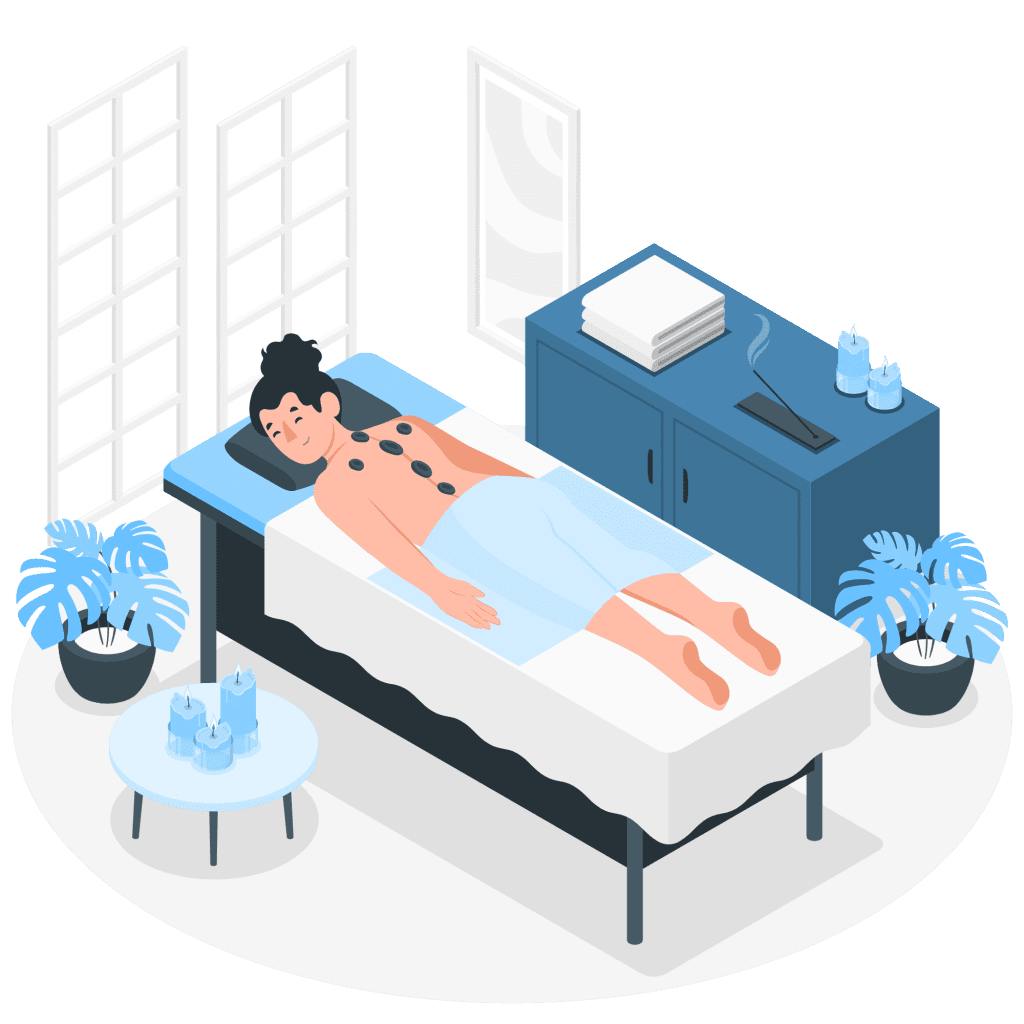
DIY Spa Night is a self-care ritual that allows individuals to create a spa-like experience in the comfort of their own home. It involves setting aside dedicated time to pamper oneself with various beauty and relaxation treatments, using readily available ingredients and tools. This activity offers a holistic approach to wellness, targeting both physical and mental well-being through relaxation, rejuvenation, and self-indulgence.
DIY Spa Night process:
-
- Skin Care: Start your spa night by focusing on skincare. Cleanse your face with a gentle cleanser to remove makeup and impurities. Follow up with exfoliation to slough off dead skin cells and reveal a smoother complexion. You can make your own exfoliating scrub using ingredients like sugar, salt, or oatmeal mixed with honey or coconut oil.
-
- Facial Treatments: Treat your skin to a luxurious facial treatment. Apply a hydrating face mask to replenish moisture and nourish your skin. You can choose from a variety of DIY face mask recipes using ingredients like avocado, yogurt, honey, or mashed fruits. Let the mask sit for the recommended time while you relax and unwind.
-
- Body Relaxation: Extend the pampering to your body by indulging in a relaxing bath. Add bath salts, essential oils, or bubble bath to warm water for a soothing soak. You can also incorporate homemade bath bombs or bath teas for added relaxation and skin benefits.
-
- Manicure and Pedicure: Take care of your hands and feet with a DIY manicure and pedicure. Trim and shape your nails, push back your cuticles, and apply nail polish if desired. Treat your hands and feet to a moisturizing treatment by massaging in a rich hand and foot cream.
-
- Hair Care: Show your hair some love with a nourishing hair treatment. Apply a hair mask or deep conditioner to hydrate and repair your strands. You can make your own hair mask using natural ingredients like coconut oil, avocado, or yogurt.
-
- Relaxation: After completing your spa treatments, take some time to relax and unwind. Wrap yourself in a cozy robe, sip on herbal tea, and enjoy some quiet time to reflect and recharge.
Day 4: Sound Healing

Sound healing is a therapeutic practice that utilizes various sound frequencies to promote relaxation, reduce stress, and restore balance in the mind and body. This ancient healing modality has gained popularity in contemporary wellness practices, offering a holistic approach to well-being.
-
- The practice of sound healing involves using sound vibrations, produced by instruments such as Tibetan singing bowls, crystal bowls, tuning forks, gongs, and even the human voice, to induce a state of deep relaxation and meditation.
-
- Each instrument emits specific frequencies that resonate with different parts of the body, influencing the energetic flow and promoting healing at a cellular level.
-
- During a sound healing session, participants typically lie down or sit comfortably while the practitioner plays the instruments or vocalizes specific tones and chants.
-
- As the sound waves permeate the environment, they interact with the body’s energy centers, known as chakras, and energy pathways, facilitating the release of tension, blockages, and negative emotions.
Research suggests that sound healing can have profound effects on both physical and mental well-being. Studies have shown that exposure to certain sound frequencies can stimulate the production of neurotransmitters associated with relaxation and mood enhancement, such as serotonin and dopamine. Additionally, sound therapy has been found to reduce levels of cortisol, the stress hormone, promoting a sense of calm and tranquility.
Furthermore, sound healing is believed to have a harmonizing effect on the body’s bioenergetic field, or aura, which encompasses the subtle energy centers and pathways that regulate overall health and vitality.
By immersing oneself in the soothing sounds and vibrations of sound healing instruments, individuals can experience profound relaxation, reduce stress levels, and cultivate a sense of inner peace and well-being amidst the hustle and bustle of daily life.
Day 5: Animal-Assisted Therapy

Animal-Assisted Therapy (AAT) is a therapeutic approach that involves interactions between individuals and animals, facilitated by a trained therapist or handler, to achieve specific therapeutic goals. In the context of wellness activities for adults, AAT offers a unique and effective way to promote emotional well-being, reduce stress, and improve overall quality of life.
Research has shown that interactions with animals can have profound physiological and psychological effects on humans. For example, spending time with animals has been found to increase levels of oxytocin, a hormone associated with bonding and stress reduction, while simultaneously decreasing levels of cortisol, a stress hormone. These physiological changes contribute to a sense of relaxation and emotional comfort, making AAT particularly beneficial for individuals experiencing stress or anxiety related to work or other life challenges.
Furthermore, AAT can enhance socialization and communication skills, which are essential in professional settings. Interacting with animals in a therapeutic setting provides opportunities for individuals to practice non-verbal communication, empathy, and trust-building, skills that are transferable to interpersonal interactions in the workplace.
Additionally, AAT can serve as a form of distraction and diversion from work-related stressors, offering a therapeutic escape from the demands of the professional environment. Whether it’s spending time petting a therapy dog, engaging in activities with horses, or interacting with other animals, AAT provides a refreshing and enjoyable respite that can help individuals recharge and rejuvenate.
Day 6: Healthy Eating

Healthy eating is a fundamental aspect of wellness activities for adults, especially those navigating the challenges of the workforce. It encompasses making mindful and nutritious food choices that nourish the body and support overall well-being. In the introduction provided above, healthy eating is implied within the broader context of wellness activities, which include stress-relief techniques, mindfulness practices, and various forms of self-care.
The importance of healthy eating in the workplace cannot be understated, given its impact on productivity, energy levels, and long-term health. Research has consistently shown that nutrition plays a significant role in physical and mental well-being. For instance, a balanced diet rich in fruits, vegetables, whole grains, lean proteins, and healthy fats provides essential nutrients that support optimal brain function, mood regulation, and immune system function.
Moreover, healthy eating habits can help mitigate the adverse effects of stress, which is a prevalent concern among working adults. When individuals prioritize nutritious foods over processed and sugary options, they can better manage stress levels and promote resilience in the face of workplace challenges.
Incorporating healthy eating into workplace wellness programs can yield numerous benefits for employees and employers alike. Employees who consume nutritious meals are more likely to experience sustained energy levels throughout the day, leading to improved focus, productivity, and job satisfaction. Additionally, promoting healthy eating within the workplace encourages a culture of well-being and reinforces the organization’s commitment to supporting the holistic health of its employees.
Day 7: Art Therapy

Art therapy is a unique form of wellness activity that harnesses the therapeutic benefits of creative expression to promote emotional healing and self-discovery. In the context of working adults, art therapy serves as a powerful tool for stress relief, self-exploration, and personal growth.
Through art therapy, individuals are encouraged to engage in various artistic mediums, such as painting, drawing, sculpting, or collage-making, as a means of externalizing their thoughts, emotions, and inner experiences. Unlike traditional talk therapy, which relies primarily on verbal communication, art therapy provides a non-verbal outlet for individuals to express themselves, bypassing linguistic barriers and accessing deeper layers of consciousness.
For working adults grappling with the pressures of the professional world, art therapy offers a safe and supportive space to explore and process their emotions related to work-related stress, interpersonal dynamics, career challenges, and personal aspirations. By creating art in a therapeutic setting, individuals can gain insights into their underlying thoughts and feelings, identify patterns of behavior, and develop healthier coping mechanisms for managing workplace stressors.
Research has shown that art therapy yields a myriad of psychological benefits for working adults, including stress reduction, increased self-awareness, improved emotional regulation, enhanced problem-solving skills, and greater resilience in the face of adversity. Moreover, engaging in artistic expression has been linked to the release of endorphins, dopamine, and serotonin – neurotransmitters associated with feelings of pleasure, relaxation, and well-being – thereby promoting a sense of calm and emotional balance.
By offering art therapy workshops, group sessions, or individual sessions as part of employee wellness initiatives, organizations demonstrate their commitment to holistic health and provide employees with valuable resources for self-care and personal development.
10-min Wellness Activities for Adults
-
- Deep breathing exercises: Inhale deeply through your nose for 4 seconds, hold for 4 seconds, and exhale slowly through your mouth for 4 seconds.
-
- Stretching: Perform simple stretches to relieve tension in your neck, shoulders, arms, and legs.
-
- Mindful walking: Take a short walk outdoors, paying attention to each step and the sensations in your body.
-
- Mini meditation: Close your eyes and focus on your breath for 10 minutes, allowing thoughts to come and go without judgment.
-
- Visualization: Picture yourself in a peaceful, serene location, imagining all the sensory details.
-
- Water break: Drink a glass of water mindfully, focusing on the sensation of hydration.
-
- Nature observation: Spend a few minutes observing the natural world around you, whether it’s plants, animals, or the sky.
-
- Brain games: Engage in a quick puzzle or brain teaser like sudoku to stimulate cognitive function.
-
- Expressive doodling: Grab a pen and paper and let your hand freely doodle whatever comes to mind.
-
- Power nap: Lie down in a comfortable position for a quick 10-minute nap to recharge your energy.
Final Thoughts
Wellness activities play a crucial role in supporting the overall well-being of adults, particularly those navigating the challenges of the modern workplace. By integrating diverse wellness practices into their daily routines, individuals can effectively manage stress, enhance resilience, and cultivate a balanced lifestyle that promotes physical, mental, and emotional health.
From mindfulness exercises and relaxation techniques to creative pursuits and physical activities, the spectrum of wellness activities offers a holistic approach to self-care and personal growth.
Woliba recognizes the importance of providing comprehensive support for working adults seeking to prioritize their well-being. With its diverse array of wellness activities tailored specifically for the needs of professionals, Woliba offers a unique opportunity for individuals to access a wide range of resources designed to promote holistic health and personal development.
Whether it’s through virtual fitness classes, guided meditation sessions, stress management workshops, or creative expression activities, Woliba empowers working adults to nurture their well-being and thrive in both their personal and professional lives.
To discover how Woliba can support your wellness journey, contact us today and take the first step toward a healthier, happier lifestyle.

